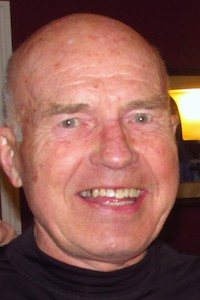By Charles (Kalev) Ehin for Enlivening Edge Magazine
Introduction
Humans are both self-interest and empathy-driven. Thus, we have an evolved need to belong that encourages us to be good group members and avoid dismissal. Also, humans are not “innately” hierarchical, otherwise, we could never have formed the “concept of equality.” Dominance is the aspect of social hierarchy that arises from “intimidating interactions” involving perceived aggression, threats, and dominance.
Social Homeostasis
Under normal circumstances we seek “social homeostasis” (an adaptive function to regulate behaviors that govern social connection to an optimal level) via self-organization between our autonomous selves (our identity, agency and purpose) and the people in our spheres of social influence. The process is comprised of continuous divergence, convergence, and emergence:
Divergence: life thrives through opening up and diversifying; creativity occurs at the edge of boundaries.
Convergence: life maintains balance and order by having a sense of purpose, alignment, boundary and structure.
Emergence: life unfolds through the healthy tension between Divergence and Convergence; this tension impels life’s Emergence.1
In essence, long-term survival is best achieved by via collaborative relationships (We Spaces)—working with others to achieve common goals based on voluntary interactions, trust and commitment—not confrontation or domination.
The Individual and The Social Core Affect
Social homeostasis starts with an individual’s “Core Affect,” an aspect of subjective emotional experience. It is a neurophysiological state consciously accessible as simply feeling good or bad, energized or quiescent.2
I’ve taken The Core Affect concept and applied it more comprehensively. Instead of limiting its applicability only to an individual I’ve expanded its range to include groups, organizations, industries and ecosystems or “extended divergent wholes.” I’ve termed it “The Social Homeostatic Self-Organizing Core.” In essence, this Social Core provides a holistic framework for illustrating the integration, capability and agility of extended “homeostatic social systems” that link people within and across organizations, nations, and continents.
“The Core’s robustness” is based on the degree of mutuality of cognition, experience and perception within and between its divergent wholes driven by:
Beliefs—propositions we consider to be true.
Attitudes—positive to negative feelings that we associate with everything.
Together, beliefs and attitudes form our values: the hierarchy of ideas, problems, and goals we consider to be most important.
Principally, each person, group, organization, and ecosystem is trying to maintain a unique identity, agency, and purpose (divergence) while simultaneously converging with other divergent wholes in order to produce greater “balanced” benefits for all. This process can be influenced but not managed or controlled, even by force.
Supporting the Emergence of a “Robust” Social Core
Having had the fortune of being the first Dean of the Gore School of Business at Westminster University in Salt Lake City, Utah, I thought it appropriate to use W. L. Gore & Associates as an example of how a “robust” Social Homeostatic Self-Organizing Core can be advanced within and between social entities.3
In 1958 Bill and Vieve Gore decided to form a company where there would be no managers or employees, only associates who had the freedom to form self-managing teams around any worthwhile venture. This would all be achieved by following one guiding objective and four basic principles:
- The Guiding Objective: To make money and have fun.
- The Four Basic Principles:
-
- Fairness–Each of us will try to be fair in all dealings.
- Freedom–To grow in knowledge, skill, scope of responsibility and range of activities.
- Commitment—Each of us will make his/her own commitments and keep them. No associate can impose a commitment on another.
- Waterline—Assuring no action is taken that has a potential of harm to the reputation, success, or survival of the enterprise.
Further, there are “no directives” in how to use the four basic principles. Hence, a robust Social Homeostatic Self-Organizing Core evolves “by nature” within and between all Gore sites.
Thus, from the start, the emphasis at Gore has been on order via dynamic interconnectedness, mutual encouragement, and experimentation leading to more challenging and rewarding outcomes.
Conclusion
We are always part of several evolving Social Cores where self-organization reigns in response to environmental conditions, not formal edicts. So it’s best to support the development and progression of robust Social Cores openly, explicitly, rather than have them remain implicit and therefore less robust. As Nichola Raihani makes quite clear, “Cooperation has carried us this far in our journey..Whether this fairy tale has a happy ending is up to us. “4
Key References
- 1. Huchins, G. (2019) “Diversity and Inclusion through the Lens of Living Systems,” The Nature of Business, September 25.
- Panksepp, J. and Biven, L. (2012) The Archaeology of Mind. W.W. Norton & Company
- Ehin, C. (2000) Unleashing Intellectual Capital. Butterworth Heinemann.
- Nichola, R. (2021) The Social Instinct. St. Martin’s Press.
Other Sources
Ehin, C. (2020). Expanding “We Spaces” Narrowing the Management Paradox. Bookbaby.
Ehin, C. (2021). “Our Evolutionary Quest for We Spaces,” Enlivening Edge, August 5
 Charles (Kalev) Ehin is the originator of “We Space” Theory. Currently he is Dean and Professor Emeritus at the Gore School of Business at Westminster University in Salt Lake City, Utah, USA. While serving in the US Air Force he had an opportunity to work with the renowned Motivation-Hygiene Theory guru, Frederick Herzberg, setting the foundation for much of his research and publications. Contact him at [email protected]
Charles (Kalev) Ehin is the originator of “We Space” Theory. Currently he is Dean and Professor Emeritus at the Gore School of Business at Westminster University in Salt Lake City, Utah, USA. While serving in the US Air Force he had an opportunity to work with the renowned Motivation-Hygiene Theory guru, Frederick Herzberg, setting the foundation for much of his research and publications. Contact him at [email protected]





What a great summary of your massive body of work. I hope people will treat themselves to a deeper look at your writing and thinking, Dr. Ehin.